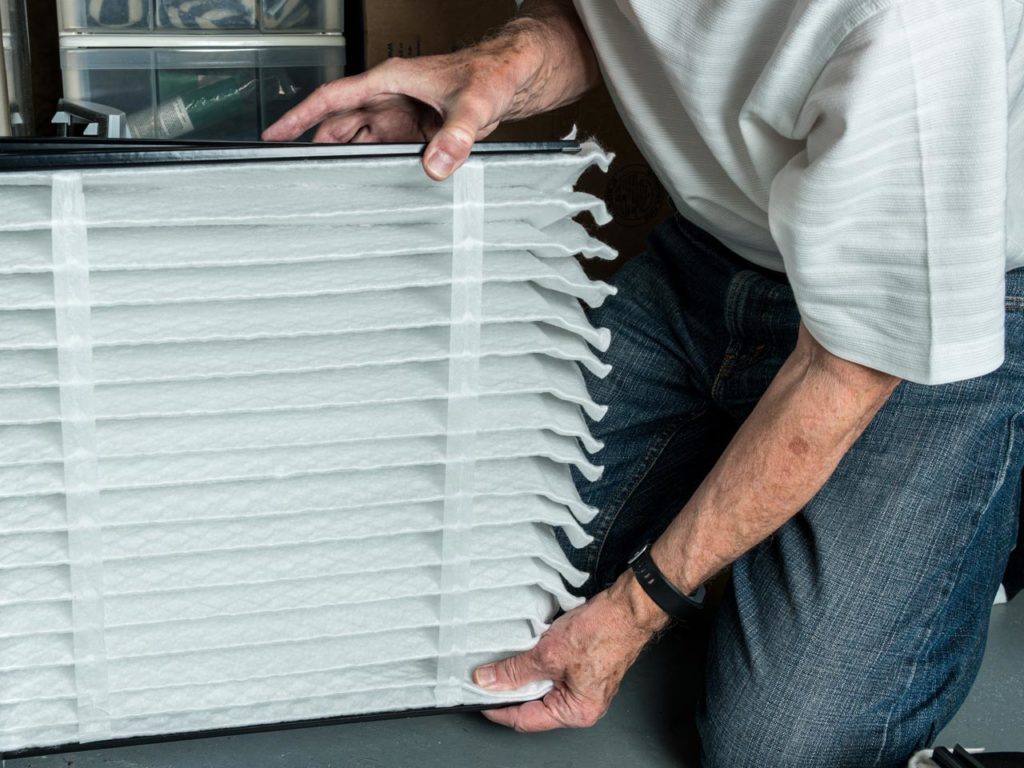Indoor Air Hygiene Purging COVID Variants

The devastating coronavirus pandemic continues to outpace the global vaccination program designed to stop it in its tracks. As global health authorities ramp up their efforts to put shots in arms, the virus responds with ever more deadly variants that threaten to spread more easily and quickly than we have experienced before. CNN reported on July 27th that the US could see 200,000 cases a day within the next six weeks as the Delta variant continues to spread. This is especially concerning, as Dr. Paul Offit, director of the Vaccine Education Center at Children’s Hospital of Philadelphia, pointed out in the CNN report: “Now we are at a point where there is a solid 25 or 30% of the population that’s saying they don’t want to get vaccinated, that they are okay with allowing this virus to continue to spread, continue to do harm and, worst of all, continue to possibly create variants that are going to be resistant to vaccine-induced immunity.”
In some areas, mask guidance has changed in accordance with WHO and CDC recommendations that masks should be worn indoors, regardless of vaccination status, in areas of high infection rates. The report from CNN further states that health experts have suggested mandating that people be vaccinated in order to work in certain venues or attend school. This is seen by some as a necessary measure to getting the country to a fully protective level of vaccination. The return to school this fall has already prompted a push for 12-15 year olds to be vaccinated as soon as possible, in order to provide a level of protection upon their return.
There is little doubt that vaccination plus mask wearing and social distancing where possible is an appropriate response to slowing the spread of the virus, but as unvaccinated children and adults alike return to school classrooms and office environments, there is more that can be done to reduce the risk of infection within these indoor spaces. Coronavirus is transmitted via airborne particles so we must also look to the quality of the air we breathe when inside a building.
It’s what’s inside the air indoors that requires constant management
One of the sneakiest things about Covid-19 is that someone can be infected and not know it, so it’s very possible we come in contact with infected, but asymptomatic, people every day. The best mitigation strategy is a multi-pronged approach including vaccinations, mask wearing, distancing, and through managing the indoor air quality with proper levels of ventilation and filtration. Filtration with HEPA and MERV-13 filters has received a lot of attention in the media, but ventilation with outside air is just as important. Ventilation dilutes harmful particles in the air – including Covid-19 and other viruses. Think about a drop of food coloring in a glass of water. If you have a small amount of water, it will be very dark – or very concentrated. The more water you add to the glass, the lighter the color of the water will be. Air works the same way, the more you ventilate, or add air, the more you can dilute the harmful things in it.
Joseph G. Allen, Director of the Harvard Healthy Buildings Program and Associate Professor at Harvard’s T.H. Chan School of Public Health, suggests that to reduce far-field airborne transmission (within the room but beyond six feet), four to six air changes per hour should be targeted: This means all the air inside a room should be fully replaced or filtered completely four to six times per hour, every hour, with outside air or fully filtered inside air, as long as people are inside. This can be done through outdoor air ventilation, recirculated air that passes through a filter with least a minimum efficiency rating value 13 (MERV 13) rating; passage of air through portable air cleaners with HEPA (high-efficiency particulate air) filters.
The issue many building owners or school superintendents, for example, will face is how to get up and running in terms of addressing indoor air quality, and here The Indoor Air Hygiene Institute can offer what we refer to as The Inside Advantage. The certification program we offer is built around solid scientific facts and is designed to provide guidance, continuous air monitoring, and ongoing support to those that want to make a tangible impact on human health for their occupants. It is also a very valuable program to understand what exactly, if anything, is needed to address indoor air quality issues. The goal of this program is to determine where air quality issues need to be addressed, what the best solutions are, and not waste money on assumption-based buying.
Protecting health through hygienic air
We measure the five core elements of indoor air quality at the outset – Temperature, Humidity, CO2, VOCs and Particulate Matter (PM2.5)– before making recommendations to achieve optimal air hygiene within a space. These factors are monitored in real time to ensure that the air in a building consistently meets high hygiene standards.
Defeating COVID variants will take a concerted effort from each and every one of us, but with a multi-faceted approach that targets elements such as vaccination, social distancing, responsible mask wearing and the highest levels of indoor air hygiene, together we can look to reopen the doors to our lives and keep them open long term.
For more information on how The Institute can help you to gain the Inside Advantage, contact us


Ensure you are taking the right steps to provide quality indoor air. Give people the confidence to return indoors.